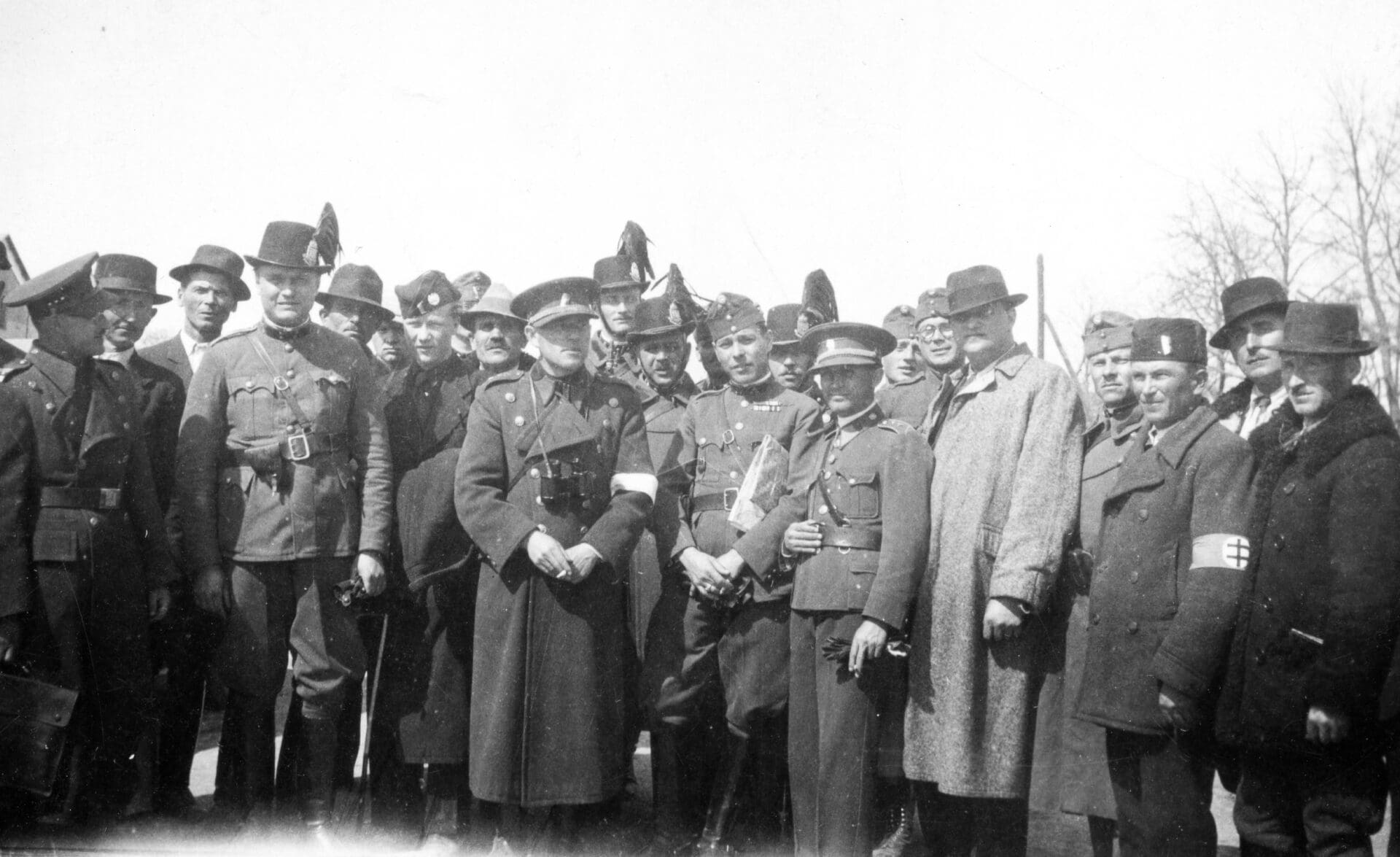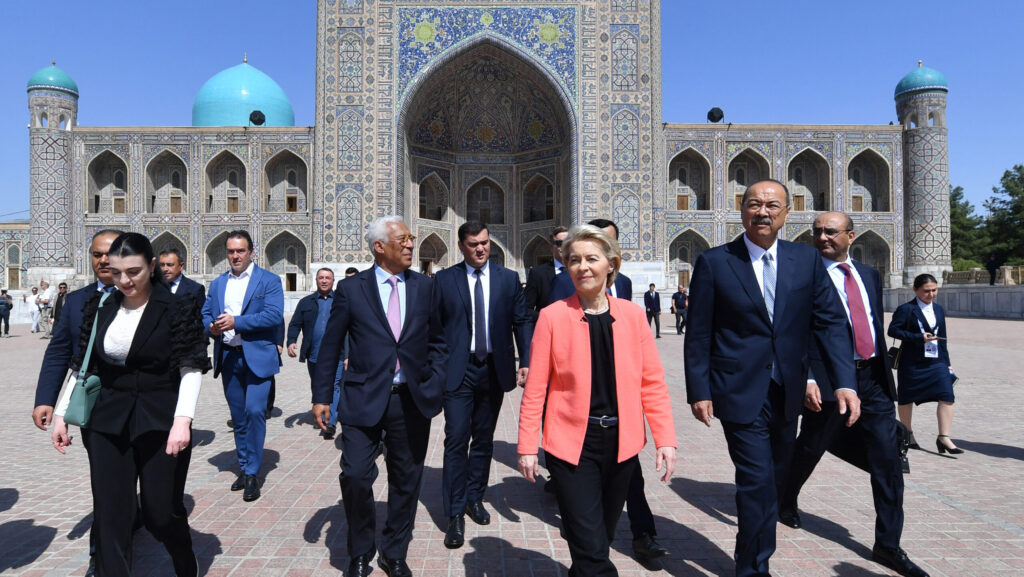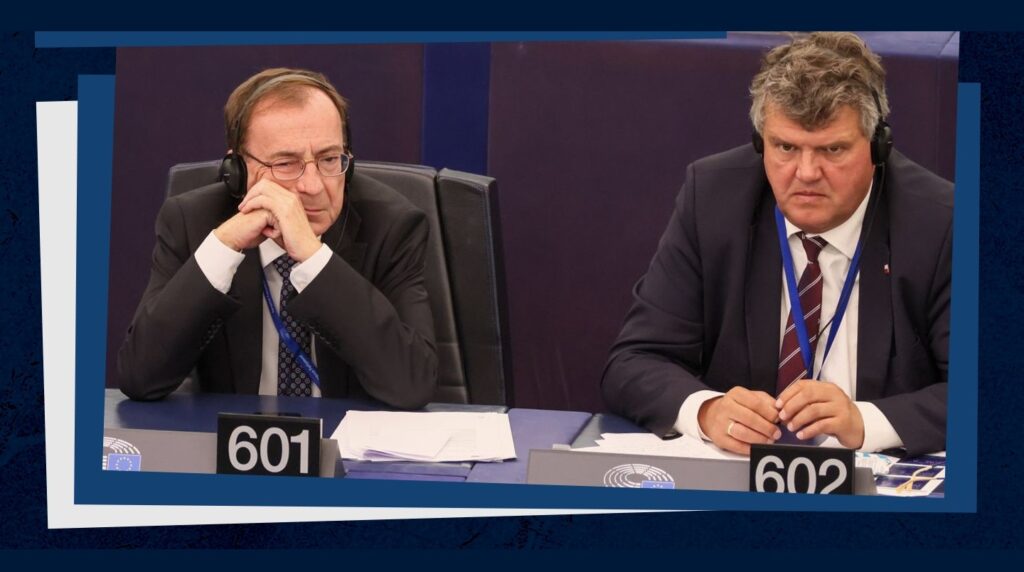In our previous articles we have described how ordinary Hungarians saw the German occupation of 19 March 1944 and also how the Budapest police force behaved during the siege of Budapest. In this article, we will take a look at how the Budapest police saw the German occupation itself. Their position was somewhat different from that of ordinary people as they were sworn protectors of Hungarian sovereignty and therefore remaining fully passive was not an option for them.
The police department in Szeged was instructed by the headquarters in Budapest as early as 12 p.m. on 19 March that they could only accept orders from their superiors and that their task was to maintain internal order.[i] Later in the afternoon the police were also emphatically instructed to avoid orders ‘from wherever they come’ if they go beyond the maintenance of internal order. On 24 March, the Budapest chief of police asked German-speaking officers and policemen to report to the headquarters, and on 1 April, policemen were told that if they had to take action against German patrols, they should first inform the centre about what happened by phone. Measures to be taken against Jews were only referred to by quoting the relevant instructions from the prime minister or the Ministry of the Interior: Jews should not have cleaning side jobs, Jews are not allowed to own a radio or leave their designated residence, etc.
Soon, György Petrányi became the new Budapest police chief on 14 May, and Béla Buócz was appointed rural police chief to replace Endre Oroszlány on 28 May. Elemér Halász, the former deputy of the provincial chief, could keep his job. After the German occupation, the national chief of police, László Nagyselmeczy was replaced by his deputy, Béla Csapó, until the appointment of József Forgács on 9 July. Substantial changes took place after Petrányi’s appointment: the decoration of collaborationist police officers, the re-examination of the ‘ancestry records’ of police officers and their wives, and the urging of cooperation with the Germans started. From then on, the German city commander was entitled to sending his own experts to the scene if for example there was a traffic accident involving Hungarian police and German units. Policemen also had to report to the Germans through a Hungarian liaison officer.[ii]
‘The German officers occupying the headquarters behaved in an unfriendly way, like enemies’
All this would not reveal much about the police’s response to the occupation, however, in the People’s Court proceedings of former Budapest police chief Sándor Éliássy, a number of Budapest policemen spoke in detail about the day of the occupation. Éliássy himself—acquitted at the end of the proceedings—reported that on the day of the occupation ‘the German officers occupying the headquarters behaved in an unfriendly way, like enemies’, and clarified that ‘they were not allies, but they came in as enemies, because Hungary did not fulfil its obligations as an ally: it wanted to stab Germany in the back, it failed to solve the Jewish question, and it did not block the communist underground’s workings.’ It is questionable whether an average Gestapo member would have brought up ideological reasons such as the ‘non-solution’ of the ‘Jewish question’. However, what we do know for a fact is that the Germans settled in three rooms of the building of the police headquarters in Budapest (today the building at 8 Széchenyi István Square) and cut off the telephone connection with the Ministry of the Interior—so their presence could hardly be called neutral or friendly.[iii]
Of course, the question arises as to how eight or twelve German police officers (or ‘soldiers’, in other written records) could disarm the entire police headquarters in Budapest. From the testimony of police lieutenant colonel Lajos Seres, it appears that the police received verbal instructions from the Ministry of Interior at dawn, in which resistance was prohibited. Police lieutenant colonel Béla Papp also said that German tanks were stationed in front of the police headquarters in Budapest, making it clear what any resisting police could have expected: ‘The small number of police guards at the headquarters did not even think of resisting such military force.’ However, the Germans negotiating with Éliássy went even further: they warned the chief of police that ‘if an atrocity was committed’ against them, ‘it would have serious consequences for the citizens of Budapest’. Despite all this, Éliássy successfully rejected the Germans’ demand to use Hungarian police cars, and he also succeeded in taking Endre Bajcsy-Zsilinszky—the most prominent anti-Nazi politician and MP in Hungary—to hospital, after he was involved in a gunfight with the Gestapo when they wanted to arrest him and was shot by the Germans. Hungarian police officers were also assigned to protect the main post office, as well as radio and telephone exchanges.[iv] The police did not manage to protect the radio: one of the first things the Germans did was to occupy the building. In a risky act of defiance, someone slipped in the well-known melody of the song ‘Ne higgy, magyar, a németnek!’ (‘Do not trust, Hungarian, the Germans’) in the 19 March broadcast, albeit without the lyrics.[v]
‘We were forced to stop the observation’
Éliássy’s attempt to have the Gestapo agents headquartered at the Hotel Astoria watched also failed: ‘A German officer came to the headquarters and said that if they saw a Hungarian detective in front of the Astoria again, he would be shot immediately. That’s why we were forced to stop the observation,’ Éliássy recalled. According to Éliássy, had he acted differently—for example, had he ordered his subordinates to resist with arms—it would have ‘led to such a terrible bloodshed that would have claimed masses of innocent Hungarian people as victims’. Referring to his resignation, he added during his people’s court proceedings: ‘I don’t think there is anyone in this country who could accuse me that I didn’t fight against the occupation and its consequences in an honest Hungarian spirit.’[vi]
Police officers were certainly aware of who they were reporting to as policemen or gendarmerie officers after 19 March. As the leaflets printed by the Hungarian resistance and distributed to the employees of the law enforcement agencies put it, they were serving the ‘government of German-lackey Sztójay!’ (The collaborationist prime minister was called Döme Sztójay). The Hungarian-language pamphlets dropped from allied planes sent the same message. For example, at Baja, the following pamphlets were dropped: ‘Freedom? Independence? What is Hungary: an independent state or a vassal of Germany?’ All policemen must have had information about the contents of these pamphlets, since they were ordered to confiscate them, along other pamphlets titled ‘Death to the German Occupiers!’ and ‘The German Invaders and Their Traitorous Accomplices.’[vii]
It must have been clear to everyone that a decision had to be made about whether they wanted to be on the side of the government, collaborating with the German invaders, or whether they would resign or perhaps join the resistance. And while Éliássy was primarily afraid of the Germans, on 19 March Kálmán Shvoy, a conservative politician critical of the extreme right, wrote in his diary about concerns of a completely different kind: ‘I think sad days will dawn upon us. I am prepared for the worst from our own people, who will now give free rein to their individual vendettas.’[viii] About that, he was right—but this belongs to another article.
[i] Muzej Vojvodine (Novi Sad), 6/73., 6/75.
[ii] See Budapest Főváros Levéltára (hereon cited as BFL), VI.13.a. vol. 92.
[iii] BFL, XXV.2.b.1946.4946.
[iv] BFL, XXV.2.b.1946/4946.
[v] István Kolléga Tarsoly (ed.), ’Magyarország a XX. Században’, Szekszárd, Babits, 1998, vol. III., 377-378.
[vi] BFL, XXV.2.b.1946/4946.
[vii] János Pelle, ’A Magyar Államvasutak és a holokauszt történetéhez’, Hitel, 2016/4. 51-69, here 57; András Pál Oláh, ’A magyarországi légiháború és a magyar zsidók deportálásának kapcsolatai a II. világháború idején’, Belvedere Meridionale, 2018/2. 69-87, ere 77., footnote no. 46.; BFL, VI.13.a. vol. 92.
[viii] Mihály Perneki (ed.), Shvoy Kálmán titkos naplója és emlékirata, 1918-1945, Budapest, Kossuth, 1983, 276.








